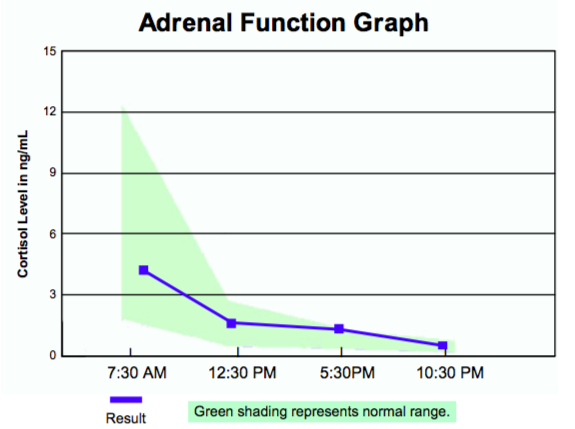Picture this, you’re running from a bear. In order for you to run faster and get away, your body releases a of surge of cortisol and adrenaline. During this ‘fight or flight’ response, cortisol helps raise our blood pressure, increase blood flow to our muscles, reduce inflammation and heighten mental focus. However, this comes at a cost of suppressing other bodily functions including our immune, digestive and reproductive system. This is referred to as the The Alarm Stage.

The Phases
Now you move to Toronto….and your body thinks you are constantly running from a bear. Long hours at work, crowded subways, crazy traffic and the constant ‘busyness’ means your adrenal glands are working overtime to keep up with the demand for cortisol. With ongoing stress, your body enters The Resistance Phase, when the body is flooded with constant high levels of cortisol. Prolonged exposure to high cortisol can lead to symptoms such as:
-Feeling tired but wired and having trouble falling asleep at night
-Stubborn weight gain, especially around the abdomen
-Anxiety
-Digestive issues (gas, bloating), food sensitivities and constipation
-Cravings for sweet and salty foods
-Irregular menstrual cycles and difficulty getting pregnant***→ high cortisol suppresses egg development and can prevent ovulation from occurring 1,2
Over time, this ongoing stress can cause significant burnout and underproduction of cortisol from the adrenal glands. Once the adrenal glands are no longer able to produce adequate cortisol, your body enters the The Burnout Stage. During this stage, you may experience symptoms such as:
-Difficulty waking up in the morning
-Frequent colds and flus
-Decreased tolerance for exercise and poor recovery
-Low blood pressure, which can leave you feeling dizzy and lightheaded
-Depression and mood swings
-Irregular cycles and premenstrual spotting→** Due to prolonged high demands for cortisol, the body ‘steals’ from progesterone to make more cortisol.3 Low levels of progesterone can cause irregular cycles, and premenstrual spotting.
Testing
To get an accurate representation of adrenal function and cortisol levels, I recommend testing your salivary cortisol four times during the day: upon waking, lunch time, late afternoon and before bed. Cortisol has a natural circadian rhythm; it should rise in the morning and slowly decline throughout the day. By testing cortisol using saliva, you prevent anticipatory spikes in cortisol that can occur with blood draws and needles. Saliva is collected into test tubes and express shipped for laboratory analysis.
My Experience with Testing
I had been running full steam ahead working at two clinics in Toronto and as a research assistant on herbal safety during pregnancy and lactation. As you can imagine, I was started to experience symptoms of adrenal burnout. In order to properly diagnose and treat myself, I did my own cortisol salivary hormone testing. The results were not surprising…and help me feel confident on where I need to set my priorities.
As you can see on my personal results below, my cortisol is within normal range, but NOT optimal in the morning and before dinner. My morning cortisol is on the lower end, which explains why I’ve been dragging myself to the gym every morning. At 5:30pm, you can also see where there is a spike in my cortisol. 5:30 is my busiest appointment slot, and I find I often have trouble winding down at the end of the night after working late hours. Based on my results, I know I need to focus on energizing adrenal support in the morning to boost me up, and calming adrenal support in the evening to help me relax.

Treatment
Treatment for adrenal function is highly individualized depending on clinical presentation and health goals. Depending on what stage the person is in, treatment will vary greatly and may include nutritional support, herbal therapy, lifestyle changes and personalized meal plans. If you want to learn more and determine your current level of adrenal function, book now to learn your adrenal function and get started feeling better today.
References
1.Macfarlane, M. S., et al. “Effect of duration of infusion of stress-like concentrations of cortisol on follicular development and the preovulatory surge of LH in sheep.” Animal reproduction science 63.3-4 (2000): 167-175.
2.Berga, Sarah L., Tammy L. Daniels, and Donna E. Giles. “Women with functional hypothalamic amenorrhea but not other forms of anovulation display amplified cortisol concentrations.” Fertility and sterility 67.6 (1997): 1024-1030.
3.Onyenekwe, C. C., et al. “Effect of pre and post academic examination stress on serum level of cortisol and progesterone circulation amongst Students of Nnamdi Azikiwe University Nnewi Campus Anambra State, Nigeria.” International Journal of Tropical Disease & Health 4.1 (2014): 62-9.

